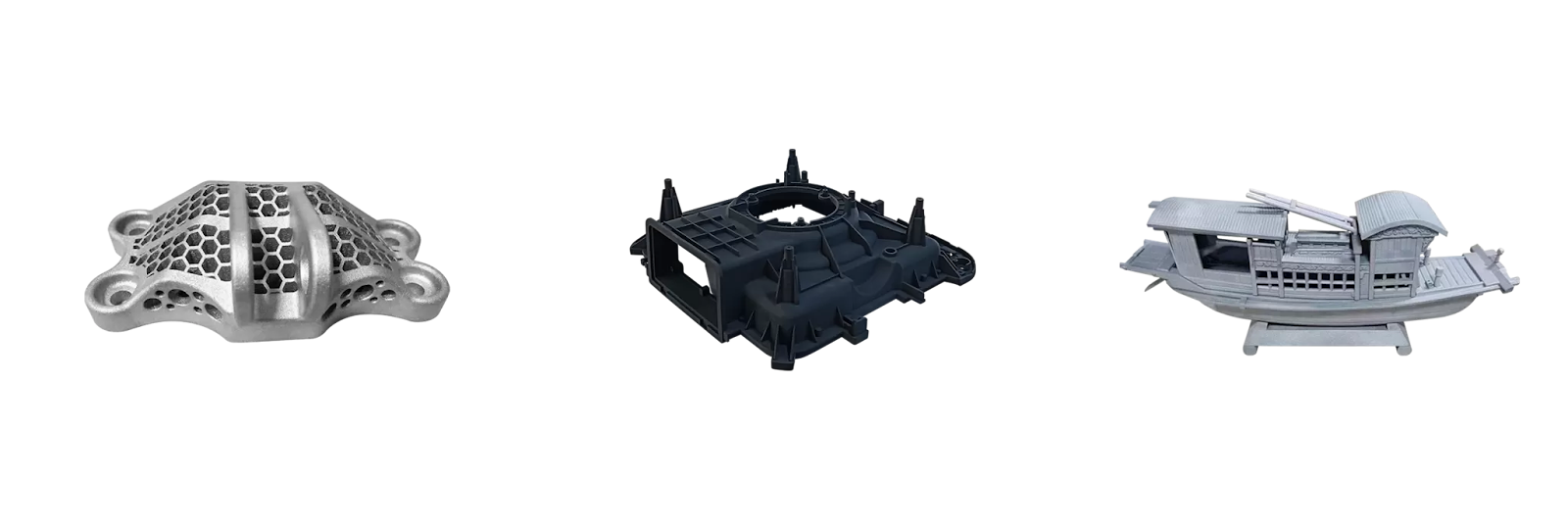Ever feel like your project, your team, or even your software feels less like a well-oiled machine and more like a frantic game of telephone gone wrong? Information lags, updates clash, and making a simple change feels like trying to turn an oil tanker with a canoe paddle. Yeah, we’ve all been there. That friction, that disconnect – it’s the Achilles’ heel of modern complexity.
But what if there was a better way? A way for independent parts to work not just alongside each other, but truly together, in perfect sync, adapting on the fly? Enter Sinkom. It’s not just another buzzword tossed around in tech conferences (though, honestly, it’s starting to make waves there too). It’s a fundamental shift in how we conceive and build systems capable of thriving in our volatile world. Think of it as the operating system for resilience.
The Glue Holding Modern Complexity Together: What Sinkom Really Is
Okay, let’s cut through the jargon. Sinkom – a name born from Synchronization, Communication, and Modularity – is essentially a blueprint. It’s a conceptual model describing how complex systems, regardless of their nature, can function as a cohesive whole made up of autonomous, plug-and-play parts. Imagine an orchestra where every musician plays their own score perfectly, yet constantly listens and subtly adjusts to everyone else in real-time, without needing the conductor to micromanage every note. That’s the Sinkom ideal.
It’s about components that are:
- Independent: Self-contained, capable of doing their job solo.
- Interconnected: Seamlessly linked, constantly sharing vital information.
- Temporally Aligned: Operating on the same beat, reacting to changes now, not later.
- Fluid: Easily added, removed, or upgraded without bringing the whole system down.
Forget rigid hierarchies or monolithic structures. Sinkom embraces the messy reality of modern operations – supply chains spanning continents, software ecosystems with countless integrations, cross-functional teams tackling wicked problems. It’s about building systems that don’t just survive chaos but dance with it. Honestly, this isn’t talked about enough: the sheer elegance of systems designed this way is a thing of beauty.
Deconstructing the Name: Sync, Comm, Modularity – The Holy Trinity
The name “Sinkom” isn’t just catchy; it’s literally the recipe. Let’s break down these core ingredients:
- Synchronization (Sync): This isn’t your granddad’s batch processing. We’re talking real-time alignment. Components share state updates instantly, ensuring everyone is literally on the same page at the same moment. Think of a live Google Doc where edits appear instantly for everyone, versus emailing Word files back and forth. It eliminates costly lag and version conflicts. It’s the heartbeat keeping everything coordinated.
- Communication (Comm): Constant, lightweight, and purposeful dialogue is the lifeblood. Information flows freely but efficiently – think high-bandwidth APIs, event streams, or clear team communication protocols. It’s not about drowning in noise; it’s about the right information reaching the right component at the right time. Some experts obsess over the tech, but I’ve seen brilliant Sinkom principles work wonders with simple, clear human comms channels too.
- Modularity: This is the structural backbone. Systems are built from discrete, well-defined units (modules) with clear interfaces. Like LEGO bricks, they snap together easily. Need to upgrade a payment processor? Swap the module. Need to add AI analytics? Plug it in. This isn’t just about code; it’s about designing teams, processes, and even physical machinery with clean boundaries and standardized connection points. True modularity enables that legendary plug-and-play flexibility.
These three aren’t sequential steps; they’re interdependent forces. Strong modularity enables clean communication channels. Efficient communication enables real-time synchronization. And synchronization makes modularity viable and powerful. Trying to have one without the others? It’s like building a car with an engine, wheels, but no steering wheel or axles connecting them. You might get noise, but you won’t get anywhere useful.
Why Now? The Perfect Storm Driving Sinkom Adoption
Sinkom isn’t a brand-new idea plucked from thin air. It’s the crystallization of trends we’ve seen bubbling for years, meeting the harsh demands of our current reality. What’s changed?
- The Pace is Relentless: Markets shift overnight. Customer demands evolve weekly. Technology advances daily. Monolithic systems or slow, hierarchical decision-making simply can’t keep up. We need systems that iterate rapidly. Real-time coordination isn’t a luxury anymore; it’s survival.
- Complexity is Exploding: Systems are more interconnected and interdependent than ever. A hiccup in a supplier’s logistics software can halt a factory on another continent. We need resilience baked in, not bolted on. Decentralized yet coherent operation is key.
- The Tech Finally Matches the Vision: Cloud computing, high-speed networks, event-driven architectures, containerization (Docker, Kubernetes), message brokers (Kafka, RabbitMQ), and APIs have matured. These are the enablers for practical Sinkom implementation – providing the infrastructure for real-time comms, modular deployment, and dynamic scaling. Frankly, we couldn’t do this effectively even ten years ago at this scale.
- The Human Factor: Siloed departments and opaque processes are productivity killers. Modern work demands cross-functional collaboration and transparency. Sinkom principles applied to organizational design foster exactly that – teams as interconnected modules.
The stars have aligned. The pain points are acute, and the tools to solve them are finally here and proven. Sinkom provides the coherent framework to tie it all together.
Sinkom in Action: Real-World Wins Beyond Theory
Enough theory. Let’s get concrete. Where is Sinkom making waves? You might be surprised.
- Tech & Software: Beyond Microservices: Microservices were a step towards modularity, but often fell short on the sync and comm parts, leading to distributed monoliths or integration nightmares. Sinkom takes it further. Imagine:
- An e-commerce platform where inventory levels sync instantly across the website, mobile app, warehouse systems, and supplier portals. No more overselling.
- A SaaS application where new features (modules) can be A/B tested and rolled out to specific user segments without disrupting core functionality. Zero downtime deployments become the norm.
- Key Tech Enablers: Event Sourcing, CQRS, Service Meshes, Real-time Databases, API Gateways.
- Healthcare: Saving Seconds, Saving Lives: In hospitals, information lag can be fatal. Sinkom enables:
- Patient vitals from monitors syncing instantly with electronic health records (EHR) and alerting relevant staff via secure comms channels.
- Modular diagnostic tools (imaging, lab systems) plugging into a central patient record, providing a unified, real-time view.
- Pharmacy systems automatically checking for drug interactions against the latest patient data the moment a prescription is entered.
- The Payoff: Faster interventions, reduced errors, coordinated care pathways.
- Manufacturing: Agile Factories & Supply Chains: Forget rigid production lines. Think adaptive:
- IoT sensors on machines detect a potential failure and instantly communicate with maintenance scheduling (modular service) and downstream production modules, which dynamically adjust workflows in real-time.
- Supply chain modules receive live demand signals from sales platforms, syncing instantly with raw material ordering, production planning, and logistics. No more bullwhip effect.
- Plug-and-play robotic workcells that can be quickly reconfigured for different products based on real-time orders. That’s modularity and sync in action.
- Organizations: Breaking Down Silos for Good: This is where it gets personal. Applying Sinkom to team structure and processes means:
- Autonomous, cross-functional teams (modules) with clear missions and interfaces.
- Real-time dashboards syncing key metrics across departments (Sales, Marketing, Product, Support) – everyone sees the same truth.
- Communication platforms facilitating constant, lightweight information sharing (stand-ups, chat channels, shared docs) replacing endless email chains and status meetings.
- The result? Faster decision-making, improved innovation, and employees who actually understand how their work connects to the whole. You know, the stuff we all pretend happens but often doesn’t.
Sinkom vs. Traditional Models: Why It’s Not Just Old Wine in a New Bottle
It’s easy to dismiss Sinkom as just a repackaging of SOA, microservices, or agile principles. That’s missing the forest for the trees. Let’s be clear: Sinkom integrates concepts but elevates them with its relentless focus on real-time synchronization as an equal pillar to modularity and communication.
Sinkom vs. Traditional Approaches: A Quick Comparison
| Feature | Traditional Monolithic / Siloed Approach | Service-Oriented (SOA) / Microservices | Sinkom Approach |
|---|---|---|---|
| Structure | Rigid, Centralized | Loosely Coupled Services | Modular, Plug-and-Play Components |
| Communication | Often Batch, Slow, Point-to-Point | APIs (Often Request/Response, Can be Async) | Continuous, Real-Time, Event-Driven |
| Synchronization | Manual, Delayed (e.g., nightly syncs) | Eventual Consistency (Takes time) | Real-Time, Immediate State Alignment |
| Change Response | Slow, High Risk (Ripple effects) | Faster per service, Integration Challenges Remain | Fast, Localized Impact, Dynamic Adaptation |
| Resilience | Single Point of Failure Risk | Improved (Isolated failures), But Complexity Grows | High (Failures contained, System adapts) |
| Scalability | Vertical Scaling (Bigger server) | Horizontal Scaling (More service instances) | Granular, On-Demand Scaling per Module |
| Flexibility | Low | Moderate (Per service) | High (Easy to add/remove/upgrade modules) |
| Complexity Mgmt | Simpler initially, becomes unwieldy | High operational complexity | Managed Complexity via Clear Interfaces & Sync |
See the difference? Traditional approaches might tick one or two boxes. Microservices get modularity and some comms. SOA aimed for interoperability. But Sinkom demands all three pillars working in concert, especially that real-time sync. It’s the synchronization that unlocks the true potential of modularity and fluid communication. Without it, you’re still dealing with inherent lag and coordination overhead. Some folks in the SOA world might push back on this, claiming they do sync, but in practice, it’s often eventual consistency at best. Sinkom pushes for immediate temporal alignment.
The Tangible Payoff: Flexibility, Scalability, Resilience Unlocked
So, why go through the effort? What’s the actual ROI of embracing Sinkom? Let’s talk brass tacks:
- Unparalleled Flexibility & Agility: Need to pivot? Swap out a module. Adopt a new technology? Integrate it seamlessly. Respond to market shifts? Do it in hours or days, not months. That plug-and-play nature is transformative. It’s like having a customizable toolkit instead of a single, fixed-purpose machine.
- Effortless, Granular Scalability: Traffic spiking on your checkout module? Scale just that part. Analytics processing lagging? Add more resources there. No need to over-provision the entire monolith. You scale what you need, when you need it. Cloud economics love this.
- Built-in Resilience: When components are independent and failures are contained, the whole system doesn’t topple. If one module encounters an issue, others can often continue functioning, or gracefully degrade. Real-time comms mean problems are detected and addressed faster. It’s antifragility in action.
- Faster Innovation & Iteration: Smaller, focused modules are easier to develop, test, and deploy independently. Experimentation becomes low-risk. You can roll out features incrementally and get feedback rapidly. This is the engine of continuous improvement.
- Reduced Complexity (Managed): Counter-intuitively, while the system might be complex, Sinkom manages that complexity by enforcing clear boundaries (modularity), efficient information flow (communication), and constant alignment (synchronization). It replaces chaotic entanglement with structured interaction. Honestly, this reduction in cognitive load for teams is a massive hidden benefit.
The bottom line? Systems built on Sinkom principles are simply better equipped for the unpredictable, fast-paced world we operate in. They bend instead of breaking.
Implementing Sinkom: It’s a Mindset, Not Just Tech
Here’s where many stumble. You can’t just buy “Sinkom in a Box.” Throwing Kafka or Kubernetes at a problem won’t magically create a Sinkom system. The biggest shift is cultural and conceptual.
- Design for Modularity First: Start by ruthlessly defining clear boundaries and interfaces. What is each component’s single responsibility? How does it minimally and clearly interact with others? Think contracts, not spaghetti.
- Embrace Event-Driven Communication: Move beyond simple request/response. Think about components emitting events (“Order Placed,” “Inventory Updated,” “Patient Admitted”) that others can react to in real-time. This decouples components beautifully.
- Prioritize Real-Time State Synchronization: Invest in technologies and patterns that enable near-instantaneous state sharing. This might mean event sourcing, shared real-time databases (carefully!), or efficient state replication mechanisms. Don’t settle for “eventually.”
- Foster a Culture of Transparency & Autonomy: This applies doubly to organizations. Teams need clear ownership (modularity), open communication channels (comm), and shared situational awareness (sync). Empower them to act within their domain. Trust, but verify via shared data.
- Start Small, Iterate: Don’t try to boil the ocean. Identify a bounded context or a specific pain point where Sinkom principles could help. Pilot it. Learn. Refine. Then expand. It’s a journey.
The tech stack matters (message queues, container orchestration, monitoring tools), but it’s secondary to getting the fundamental design and the team’s understanding right. The tools enable the model; they don’t define it.
The Future is Fluid: Where Sinkom is Headed
Sinkom feels less like a destination and more like the prevailing direction of travel. What’s on the horizon?
- AI as the Ultimate Sinkom Orchestrator: Imagine AI agents monitoring event streams, predicting bottlenecks, dynamically adjusting resource allocation, or even composing new modules on the fly to meet emerging needs. AI becomes the intelligent glue optimizing the Sinkom fabric in real-time. That’s not sci-fi; it’s starting.
- Hyper-Automation Ecosystems: Sinkom provides the perfect foundation for complex automation spanning multiple tools and platforms. Think RPA bots seamlessly interacting with APIs, databases, and human workflows, all synchronized and communicating events.
- The Physical-Digital Blur Deepens: As IoT explodes, Sinkom principles will be crucial for managing fleets of devices, smart cities, and integrated cyber-physical systems where real-world events must trigger instantaneous digital responses and vice-versa.
- Standardization & Interoperability: As adoption grows, expect more standardized patterns, protocols, and maybe even formal specifications emerging to make connecting Sinkom-compliant modules across different vendors or domains easier. Think universal adapters for system components.
- Democratization: Tools and platforms will emerge (are emerging) that abstract away the underlying complexity, making Sinkom patterns accessible to smaller organizations and less technical domains. Low-code/no-code Sinkom builders? Probably.
The core idea – independent yet perfectly synchronized components – feels increasingly like the only sane way to navigate our interconnected, accelerating world. Sinkom provides the vocabulary and the framework to make it happen.
You May Also Read: How AI Is Transforming Video Editing, Photo Editing, and Digital Content Creation in 2025
Wrapping Up: The Synchronized Imperative
Let’s be real: the old ways of building and managing complex systems are creaking under the pressure. The demand for speed, adaptability, and resilience isn’t slowing down. Sinkom offers more than just a technical model; it offers a philosophy for thriving in complexity.
It acknowledges that independence and interconnection aren’t opposites – they’re the yin and yang of modern performance. By deliberately designing for Synchronization, Communication, and Modularity together, we create systems that are more than the sum of their parts. Systems that are fluid, robust, and capable of evolving at the pace of change itself.
Is it a silver bullet? Nope. It requires thoughtful design, cultural buy-in, and the right tools. It’s messy, iterative work. But honestly, the alternative – clinging to rigid, slow, fragile structures – feels increasingly like a one-way ticket to obsolescence.
The future belongs to the synchronized. The question isn’t really if Sinkom principles will become mainstream, but how quickly you can start applying them to your own corner of complexity. What’s one modular, interconnected, real-time step you can take this week?
FAQs
Q: Is Sinkom just another name for Microservices?
A: Not quite. Microservices focus heavily on modularity and independent deployment. Sinkom includes that but equally emphasizes real-time communication and immediate synchronization as core, non-negotiable principles. Microservices can exist without strong Sinkom traits; true Sinkom demands all three pillars.
Q: Isn’t real-time sync incredibly hard and expensive to achieve?
A: It can be challenging, but modern tools (like advanced message brokers, stream processing frameworks, and specialized databases) make it far more feasible and cost-effective than ever. The cost of not having it – in lag, errors, and missed opportunities – is often far higher. Start with critical paths.
Q: Does Sinkom mean everything has to be event-driven?
A: Event-driven architecture (EDA) is a highly effective pattern for achieving Sinkom’s comm and sync goals, especially for decoupling. However, well-designed APIs and other synchronous comms can play a role within modules or for specific, low-latency needs. The key is ensuring the overall flow supports real-time alignment.
Q: Can Sinkom principles be applied to non-technical areas, like management?
A: Absolutely, and it’s powerful! Think of teams as modules with clear responsibilities (modularity), using transparent communication tools (Slack, shared docs – comm), and operating with shared goals and real-time visibility into progress/metrics (sync). It breaks down silos and enables agile decision-making.
Q: What’s the biggest hurdle to adopting Sinkom?
A: Hands down, it’s the mindset shift. Moving away from centralized control and embracing true autonomy with real-time transparency requires significant cultural change and trust. The technical challenges, while real, are often easier to solve than overcoming ingrained organizational habits and fears.
Q: Is Sinkom only for large enterprises?
A: Not at all! The core principles of modular design, clear communication, and staying aligned are valuable for startups and small teams too. The scale of implementation might differ, but the benefits of flexibility and resilience are universal. Start small with one process or team.
Q: How do you measure the success of a Sinkom implementation?
A: Look for key metrics: Reduced lead times for changes, faster incident recovery (MTTR), improved system uptime/resilience, increased deployment frequency, better cross-team collaboration scores, and ultimately, the ability to respond faster to market or operational needs (agility). Track the flow!











